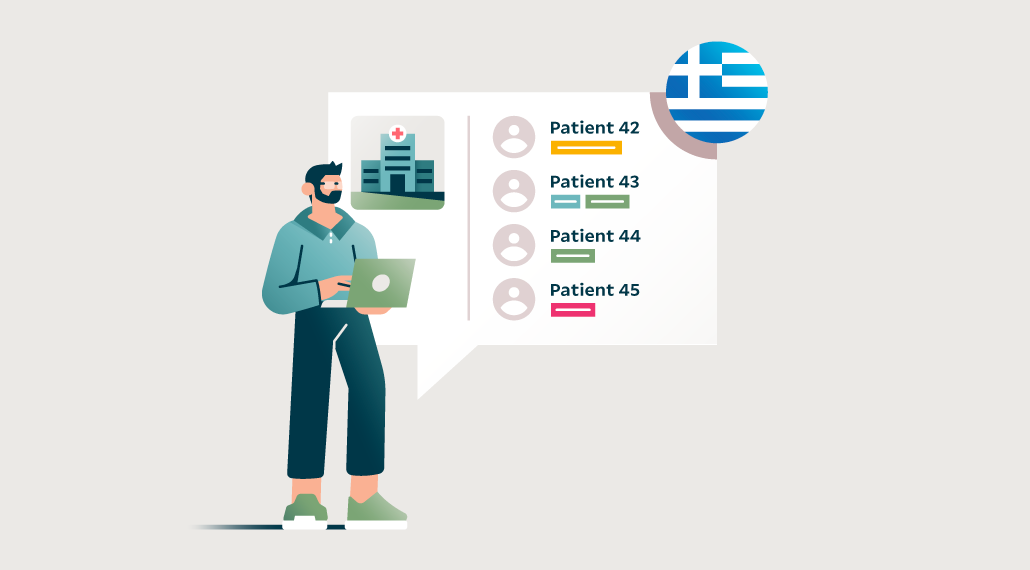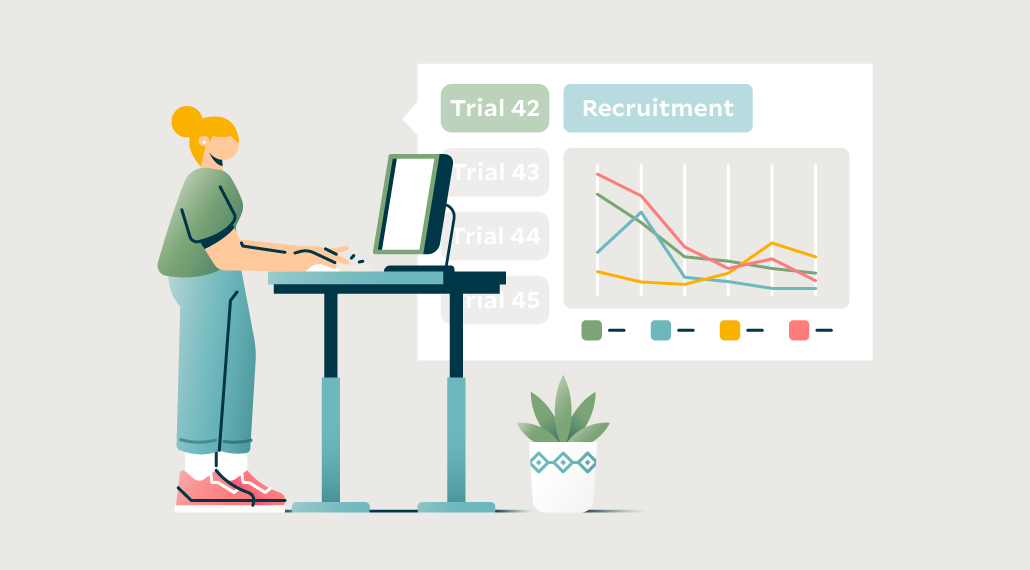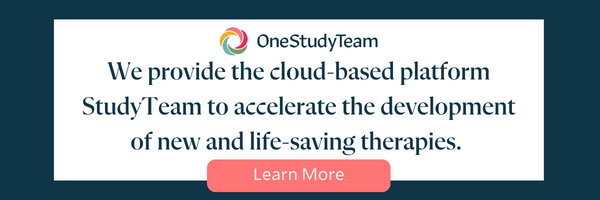December 2nd, 2022
3 Reasons We Need Tech to Speed Up Enrollment for Alzheimer's Disease Clinical Trials
By Irene B. Meier, PhD, neuroscientist and senior lead for sponsor transformation at OneStudyTeam

By: Irene Meier, neuroscientist and senior lead for sponsor transformation at OneStudyTeam
Clinical trials focused on Alzheimer’s disease treatment have been underway for nearly 45 years. And while the FDA has approved several medications, there’s still not a cure for Alzheimer’s disease. But there is hope–just in September, phase 3 clinical trial results showed the drug lecanemab can slow cognitive decline by 27%, although long-term consequences of the side effects warrant further careful observation.
Luckily, technological innovations are helping scientists to improve diagnostics, to reduce protocol invasiveness, and to share valuable insights within clinical trials. To move patients more quickly toward what we hope are more effective treatments, we need to implement new technology in the enrollment phase of clinical trials. Here are three reasons why.
(1) To intervene in an escalating public health crisis
Preventing or treating a chronic condition like Alzheimer’s disease is urgent. Case numbers are expanding, with more than 6 million people diagnosed in America alone. Deaths have doubled in 20 years. Caregivers are overburdened. Without treatment, the global cost of dementia is set to reach about $2 trillion by 2030. Alzheimer’s disease is the leading cause of that.
The main focus across Alzheimer’s disease clinical trials right now tends to be improving quality of life by slowing the progression of the disease. To start treating patients sooner in their disease progression, they need to be enrolled in clinical trials more quickly.
Right now, 90% of potential patients across clinical trials are lost before enrollment. But technology can help us change that. More and more sites are adopting technology that automates time-consuming parts of their workflow that could be better spent on patient screening and care.
For example, calendar integrations and scheduling tools can prevent conflicts and can send timed reminders to site staff to follow up with patients or schedule visits. Automation tools can also calculate patient visit windows to meet protocol needs. During an Alzheimer’s disease trial, site staff can use visit schedules with visit window tolerances built in to ensure that patients are screened for amyloid positivity on the same day they get tested for cognitive performance, if needed.
Digital tools serve as time-savers that get patients into and through the system faster, toward treatment.
(2) To make up for time lost to Alzheimer’s clinical trial failures
Of the Alzheimer’s disease clinical trials over the years, 99% have been failures. A key reason for this is that the neuro space is really complicated. There are billions of neurons in the human brain alone, and there are many differences from one individual’s brain to the next.
There are many avenues where things can go wrong in the brain. With Alzheimer’s disease, it’s hard to define in patients, and therefore hard to cure. The way Alzheimer’s disease is currently defined clinically, the pathology doesn't necessarily correspond with disease burden and progression. Clinically, Alzheimer’s disease is defined as cognitive decline beyond a certain threshold that is matched on age and education levels, plus a loss of function. Pathologically, Alzheimer's disease is defined through deposition of amyloid and tau deposits, two proteins. Amyloid progression does not correlate with disease progression.
This is where technology starts to come in. We're only as good as our instruments when identifying pathology. As our technology in the research space continues to get better, physicians and researchers can get better at assessing eligible patients for clinical trial enrollment, which has to happen before they can participate and receive therapies.
For example, mobile and wearable devices like smartphones and smartwatches can be helpful in assessing patients using real-world evidence. Devices can monitor movement like gait speed and symmetry, as well as finger-tapping speed on a screen, that could be indicators of Alzheimer’s disease before cognitive decline and help us gain insight into the natural history of the disease. There’s a lot of potential in improving and validating diagnostics.
(3) To adequately address different hypotheses of causation
A lot of concerns have recently been raised around the hypothesis that beta-amyloid causes Alzheimer’s disease. But many researchers think it’s multifactorial–there’s not just one thing that causes the disease. Researchers are looking into viral etiology, the effects of lifestyle and sugar, the connection to iron deficiency–all different directions.
With the recent news about questionable beta-amyloid data, there’s a real opportunity to look at other causing factors in addition to beta-amyloid. The fact that it's always there could mean it is just a byproduct, not a causing factor. What other factors play a role in this interaction? Increased research after multiple failed trials open up so many angles still worth investigating.
That also means we need enough clinical trials activated to investigate those angles. We need to speed up clinical trial enrollment to connect researchers with the right patients to test those theories and to hopefully administer treatments sooner that show positive outcomes.
With tools like digital enrollment systems, sites can now more easily identify eligible patient candidates across site databases using features like research indication labels, bulk imports from electronic medical records, and streamlined referrals.
At the same time, automatically de-identified patient logs from these databases can give sponsors immediate insight into roadblocks in the enrollment process. Because the biggest risk factor for Alzheimer’s disease is aging, patients often bring an accumulation of diseases and conditions over their lifetime, plus external influences such as diet and living situation. It’s hard to get an Alzheimer’s patient that has no comorbidities, which is going to influence whether they meet inclusion/exclusion criteria. Sponsors can use ongoing visibility into pre-screening and screening failures through tech to help make decisions about relaxing I/E criteria where possible, accelerating enrollment.
Looking ahead
When we enroll more patients into clinical trials faster, we can get to answers faster. We can also more quickly decrease burdens on patients and their caregivers that accumulate as Alzheimer’s disease progresses. To do this, both sites and sponsors can benefit from adopting technology that speeds up the process–from diagnostic tools, to patient management platforms, to automation features. Technology moves Alzheimer’s disease clinical trials forward, towards more treatment options. And, one day, we believe, a cure for Alzheimer’s disease.
Related Posts

How Does a Trial Manager in Greece Improve Clinical Trial Operations with StudyTeam®?
Dimitris Tziogas, local trial manager at a biotechnology company in ...
Read More
How to Address Key Clinical Trial Challenges, According to Clinresco Centres in South Africa
There’s no single solution to overcoming a research site’s specific ...
Read More
3 Clinical Trial Billing Challenges Research Sites Solve with StudyTeam
Challenge 1: Complicated coverage analysis Challenge 2: Tedious budgeting ...
Read More

.png?width=64&name=OST%20Transparent%20(1).png)